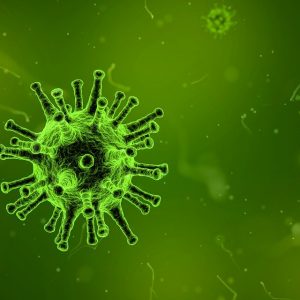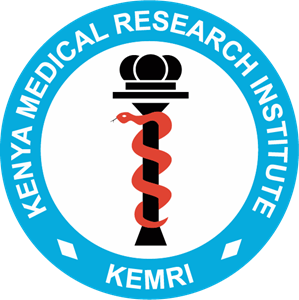CENTRE FOR VIRUS RESEARCH (CVR) NAIROBI

Overview
Centre for Virus Research (CVR) is the oldest of the centers in KEMRI. This center has eight laboratories/Units located within KEMRI Headquarters and KEMRI research campuses within Kenyatta National Hospital (KNH) compound.
CVR is responsible for conducting research, capacity build and deliver service to relevant partners and stakeholders on viral diseases affecting populations in Kenya and some countries in the region, towards improved knowledge, understanding operations on; epidemiology, diagnosis, aetiology, pathogenesis, pathogen characteristics; disease surveillance, outbreak investigations prevention and control
Key facilities include:
- Arbovirus & Viral Hemorrhagic Fevers
- HIV and AIDS
- HIV (Annex site)
- Viral Hepatitis
- Expanded Programme on Immunization (EPI) Diseases (Polio & Measles Eradication)
- Viral Diarrhea
- Human Papilloma Viruses
- Influenza and other Acute Respiratory Infections (ARIs)
- Level 3 Containment Facility (BSL3)
- Cold Room
.
Mission
To improve human health and quality of life through virology research, surveillance, outbreak investigations and response and inform policy, service delivery and capacity building.
Vision
To be a leading Centre of excellence in virology research, surveillance, response to viral disease outbreaks, service delivery and capacity building
Mandates/Functions
- Acute arboviruses & hemorrhagic fevers: epidemiology, surveillance, outbreak investigations and control.
- Influenza and other Influenza and other Acute Respiratory Infections (ARI), epidemiology, diagnosis, etiology, management, outbreak investigations and control.
- Viral diarrhea: studies on etiology, epidemiology, management and control; vaccine trials and molecular characterization.
- Viral hepatitis: epidemiology, etiology, diagnosis, outbreak investigations and control.
- Expanded Programme on Immunization (EPI) diseases (Polio and Measles: Support AFP-Polio and measles surveillance and eradication programs, vaccine potency evaluation, Polio environmental surveillance.
- HIV and AIDS: Epidemiology, Phenotypic and Genotypic characterization, Prevention and Control, Drug resistance surveillance, QA/QC in HIV programs, Window period and transfusion safety studies, HIV Diagnostic services: Viral Load, EID, PCR, Operational Research in HIV/AIDS and Training.
Achievements
The center is responsible for the following key functions;
- Coordination of research, training and service delivery activities, project implementation and management and laboratory processes.
- Conduct research, train and provide service on arbovirus & haemorrhagic fever diseases: epidemiology, surveillance, provide diagnostic service, outbreak investigations and disease control.
- Conduct research, build capacity and support diagnostic service and outbreak response for Influenza and other Acute Respiratory Infections (ARI) to cover epidemiology, virus evolution drug resistance, disease management and control
- Conduct viral diarrhoea: studies etiology, epidemiology, management and control; vaccine trials and molecular characterization.
- Conduct research, capacity build on viral hepatitis including: epidemiology, etiology, diagnosis, outbreak investigations and control.
- Support expanded Program on Immunization (EPI) diseases (Polio and Measles) activities, support AFP-Polio and measles surveillance and eradication programs, vaccine potency evaluation, Polio environmental surveillance.
- Conduct HIV and AIDS research in epidemiology, virus evolution, Prevention and Control, Drug resistance surveillance; provide HIV Diagnostic services including Viral Load, EID, PCR, Operational Research in HIV/AIDS and Training.
- Conduct research on Human papilloma and other DNA viruses.
Products & Services
- Specialized Viral Diagnostics for; HIV Early Infant diagnosis, Measles, Polio, Ebola, Marburg, ZIKA, RVF, Dengue, Yellow Fever Hepatitis, Influenza and other viruses of health importance.
- Virus culture.
- BSL 3 containment facility.
Ongoing Research Activities
- Arbovirus Surveillance; Vector Surveillance as a Surrogate System for assessing viral zoonotic disease distribution in Kenya.
- Investigation of Arbovirus/VHF outbreaks in Kenya; Analysis and Reporting of Clinical Samples Received through the Division of Disease Surveillance and Response, Ministry of Health, Kenya.
- Determination of the Seasonal Variation in the Risk of Dengue, Chikungunya and Zika Virus Transmission in Mombasa city: semi-holistic entomologic approach.
- Epidemiologic assessment of risk of Yellow fever and dengue transmission and outbreaks in Kenya.
- Genetic and ecological variation among aegypti populations in wild, rural, and urban habitats across Kenya: A measure of the risk of emerging infectious disease transmission;
- The Double Burden Of Malnutrition: Prevalence, Associated Risk Factors and the Impact of Multiple Micronutrient Supplementations in Children 3 -10 Years Old in Selected Regions in Kenya;
- Genetic diversity and molecular characterization of enteroviruses from sewage samples collected from major cities in Kenya 2013-2015;
- Piloting at-birth point of care HIV testing strategies in Kenya;;
- Oviposition site selection and behavior in evolutionarily divergent forms of Aedes aegypti: Understanding how disease-vectoring mosquitoes exploit human habitats;
- CMV reactivation in immunocompetent paediatric intensive care unit patients in Kenya;
- Evaluating the relationship of CD101 and UBE2V1 to genital mucosal inflammation.
- Integrating Assisted Partner Services and Phylogenetics for HIV and HCV Prevention.
- Moleular genetic diversity of HIV, HBV, HCV IN Kenya
- Exploring HIVTDR, virus suppression and medication adherence to improve treatment outcomes among HIV-positive infants in Kenya.
- Transmitted HIV drug resistance, viral suppression and adherence among Kenyan infants;
- Cancer registry dashboard and mapping of neoplasm among people living with HIV.
- Laboratory evaluation of the activity and safety of TIB against different HIV–1 subtypes isolated from Kenyan patients.
- Evaluation of the HITSystem© to Improve Early Infant Diagnosis Outcomes in Kenya”.
- An Assessment to Estimate the Prevalence of HIV-1, HIV/TB Co-Infection Rate, and Malaria Parasitemia Among The Kenyan Military Population.
- Detection and Molecular characterization of Polioviruses from Acute Flaccid Paralysis patients suspected of having Poliovirus.
- Detection and Characterization of enteroviruses form wastewater (Sewage) collected from main towns in Kenya.
- Serological detection and Molecular characterization of Measles and Rubella.
- Serological and Molecular characterization of Mumps Viruses in Kenya.
- Application of innovative and low-cost technology of digital microfluids (DMF)-powered immunoassay for the detection of measles and rubella infection and immunity among displaced populations in emergency settings.
- Evaluation of a Bag Mediated Filtration System (BMFS) device for surveillance of viruses in Waste Water.
- Birth Defects and Surveillance of Congenital Rubella Syndrome (CRS) Among Infants at Selected Hospitals in Kenya.
Human Immunodeficiency Virus Division
The division is responsible for research, capacity building and service provision around HIV and AIDS, Epidemiology, Virology, Drug Resistance Surveillance, Prevention and Control. It also provides HIV Diagnostic services for Viral Load, Early Infant Diagnosis and support Operational Research in HIV/AIDS.
Function
- Conduct research and capacity building in Epidemiology, virus evolution.
- Drug resistance surveillance
- Prevention and Control initiative including blood safety initiatives of the Ministry of Health
- To provide HIV Diagnostic services including Viral Load, Early Infant Diagnosis and support Operational Research in HIV/AIDS
Arboviruses & Hemorrhagic Fevers Viruses Division
Responsible for conducting research, training and provide service on arbovirus & haemorrhagic fever diseases: epidemiology, surveillance, provide diagnostic service, outbreak investigations and disease control
Function
- Conduct research and capacity building in virus epidemiology and ecology.
- Conduct disease and vector surveillance
- Support prevention and control initiatives.
- To provide disease diagnostic services and support outbreak response
Influenza & other Acute Respiratory Diseases Division
Responsible for conducting research, building capacity and supporting diagnostic service and outbreak response for Influenza and other Acute Respiratory Infections (ARI) to cover epidemiology, virus evolution drug resistance, disease management and control.
Function
- Conduct research and capacity building in virus epidemiology and ecology.
- Conduct virus characterisation and drug resistance
- Support prevention and control initiatives (vaccine composition).
- To provide disease diagnostic services and support outbreak response
Viral Diarheal Division
Responsible for conducting research, building capacity and supporting diagnostic service and outbreak response for Rotaviruses and other viral diarrhoeal infections, covering disease epidemiology, virus evolution, disease management and control.
Function
- Conduct research and capacity building in virus epidemiology.
- Conduct virus characterisation and monitor evolution
- Support prevention and control initiatives (vaccine development and improvement).
- To provide disease diagnostic services and support outbreak response
Viral Hepatitis Division
Responsible for conducting research, building capacity and supporting diagnostic service and outbreak response for Influenza and other Acute Respiratory Infections (ARI) to cover epidemiology, virus evolution drug resistance, disease management and control.
Function
- Conduct research and capacity building in virus epidemiology and ecology.
- Conduct virus characterisation and drug resistance
- Support prevention and control initiatives (vaccine composition).
- To provide disease diagnostic services and support outbreak response
Polio Measles (EPI Diseases) Division
Responsible for supporting the expanded Program on Immunization (EPI) diseases (Polio and Measles) activities nationally and regionally and for Enteric viruses research and disease prevention and control activities.
Function
- AFP-Polio surveillance; diagnostics and reporting
- Measles surveillance
- Vaccination activities and potency evaluation,
- Polio environmental surveillance and related eradication program activities.
- Sample handling (logging, shipping and/or biobanking)
- Ensuring compliance to annual WHO accreditation requirements.
Human Papilloma & other DNA Viruses Division
Responsible for conducting research on Human papilloma viruses and other DNA viruses and expand capacity to including other viruses like Herpes viruses of medical importance.
Function
- Conduct research on human papilloma viruses and other DNA viruses to expand knowledge base for epidemiology, pathogenesis, surveillance and control
- Support diagnostic service for HPV and reproductive health programs
- Support vaccination programs against HPV
- Expand research coverage to include other DNA viruses of health importance
Partners and Collaborators
| Ministry of Health |
| Centre for Disease Control and Prevention (CDC) |
| World Health Organization (WHO) |
| The National AIDS and STI’s Control Programme (NASCOP) |
| National AIDS Control Council (NACC) |
| United States Army Medical Research Unit (USAMRU-K) |
| National Public Health Laboratories Services (NPHLS) |
| INTOMID – JKUAT |
| Japan International Cooperation Agency (JICA) |
| Kanazawa University |
| Local and International Universities |
Contact Info
P.O. Box 54628-00200 Nairobi
Email: director@kemri.go.ke
